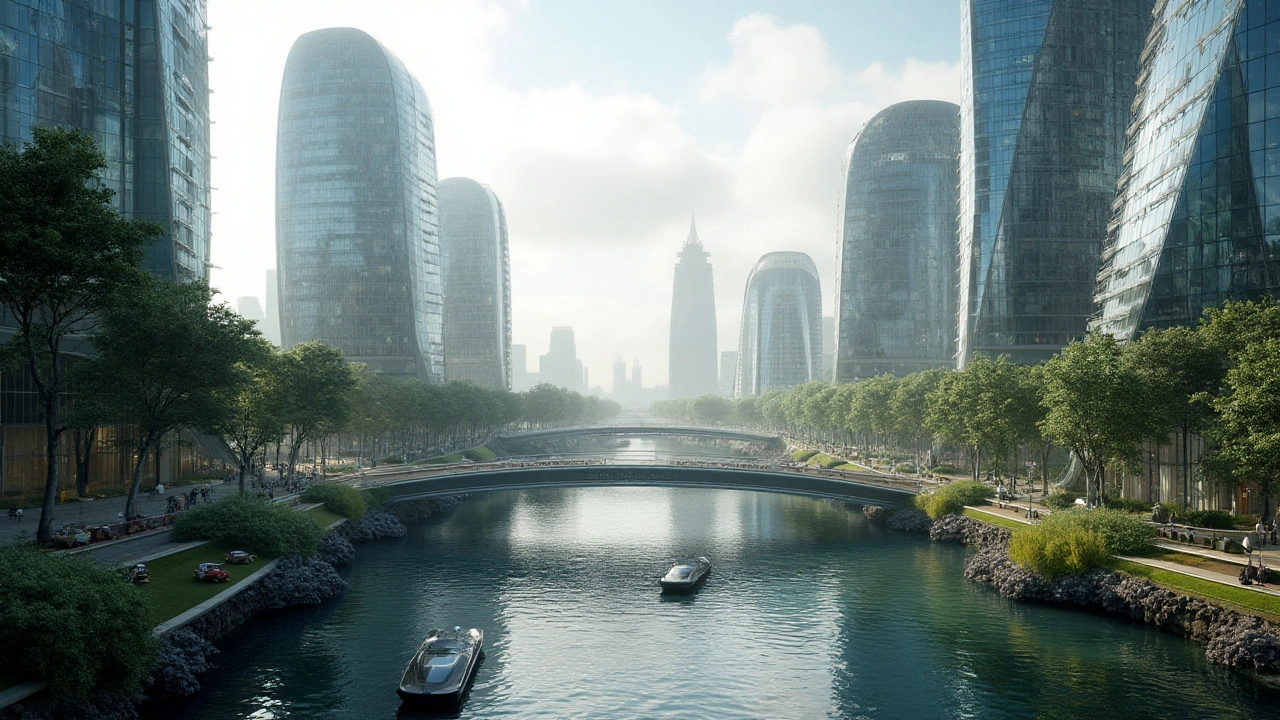High-tech architecture is revolutionizing the way we think about buildings. These modern marvels blend aesthetics with advanced technology to create innovative, sustainable structures that stand out in urban landscapes. This article delves into the rise and elements of high-tech architecture, highlighting its impact on society and the environment.
Modern buildings: easy guide to styles, materials, and smart choices
You see modern buildings every day — glass towers, low-slung mid-century homes, bold sculptural forms. If you want to recognize styles, pick materials, or plan a renovation, this page gives clear, useful points without the jargon.
Start simple: "modern buildings" covers many looks from the 20th century to today. Some focus on function and clean lines; others push shape, tech, or expressive forms. Knowing the basics helps whether you’re choosing a house, planning a project, or just walking the city.
Quick style guide
Bauhaus / International Style — straight lines, flat roofs, industrial materials, big windows. Think function first: form follows purpose. These buildings feel spare and logical.
Mid-century modern — warm wood, open plans, large glass walls that blend indoors and outdoors. Smaller scale than towers and often rich in original details like built-in cabinetry.
High-tech — visible structure and systems: exposed steel, ducts, and glass. It celebrates engineering. These buildings look like machines made for people.
Neo-futurism — smooth curves, sweeping shapes, and bold materials that feel like tomorrow. Expect striking silhouettes and a forward-looking vibe.
Postmodern & Expressionist — playful colors, historic references or wild forms. They break rules on purpose and give cities personality.
Constructivist — angular, bold, and political in origin. Strong geometry and a focus on mass and movement make these stand out in the urban fabric.
Practical tips for buyers, designers, and walkers
Spotting features: look at roof shape, window size, and how structure appears. Flat roofs and ribbon windows point to modernist roots. Exposed metal and glass suggest high-tech. Curving facades and dramatic entryways hint at neo-futurism or expressionism.
Materials matter: glass and steel give a sleek look but need careful sealing and shading. Wood and concrete are warmer but need maintenance plans. If energy efficiency matters, check for double-glazed windows, insulation, and passive design features.
Renovation tips: preserve defining elements — large window walls, built-ins, or visible beams — while updating systems like HVAC and electrics. Replace old single-pane glass with modern insulated units that keep the look but cut bills.
Mixing old and new: add modern inserts into historic shells by matching scale and rhythm. A glass extension can read as new while letting the original facade keep its voice. Keep proportions simple and avoid over-decoration.
Want examples and deeper reads? Explore posts on Bauhaus, mid-century modern, high-tech, neo-futurism, and postmodern designs to see photos, case studies, and real renovation tips. Pick a style, note its key traits, and use practical tweaks to make the design work for your site and budget.
High-tech architecture explores cutting-edge innovations in modern building designs that integrate advanced technologies. This article delves into the significance, specific examples, and future trends of these architectural marvels. Learn about smart materials, sustainable practices, and iconic high-tech structures redefining our urban landscapes. Discover practical insights and visionary concepts shaping the future of architecture.


